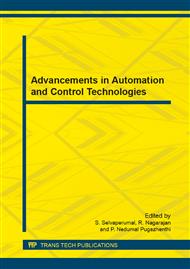p.388
p.394
p.400
p.407
p.412
p.418
p.424
p.429
p.437
Inscribing in to an Control Attempt against Jammer Attack Using FB Decoding Mechanism
Abstract:
Previously Spread Spectrum (SS) communication involve by setting up preconfigured keys among the communicating nodes that are constrained to possess synchronous behaviour. This extends to several issues creating circular dependency problem, offering less energy efficiency and thereby leading to insecure short-lived communication. In this paper, an opponent resilient secret sharing concept is introduced without any establishment of pre-shared keys by FB (Forward Backward) decoding. It illustrates using time reversed message extraction and key scheduling at receiver side that enables secured transmission over wireless communication even when the receiver node remains inactive and attaining jammer not to obtain the original data sent by the sender node. Spreading the data involves use of DSSS as it would be more compatible in adjusting to multiple bandwidths. Main goal is to transmit the message in such a way that the time required to deliver the secret must be less than the time for the opponent to find key during transmission. Further, it come up with minimal storage overhead, cost effective and sustains long-lived secured communication among the interacting nodes. Evaluation of various parameters is performed using NS-2 toolkit to prove that this newer approach is better than earlier work.
Info:
Periodical:
Pages:
412-417
Citation:
Online since:
June 2014
Authors:
Price:
Сopyright:
© 2014 Trans Tech Publications Ltd. All Rights Reserved
Share:
Citation:


